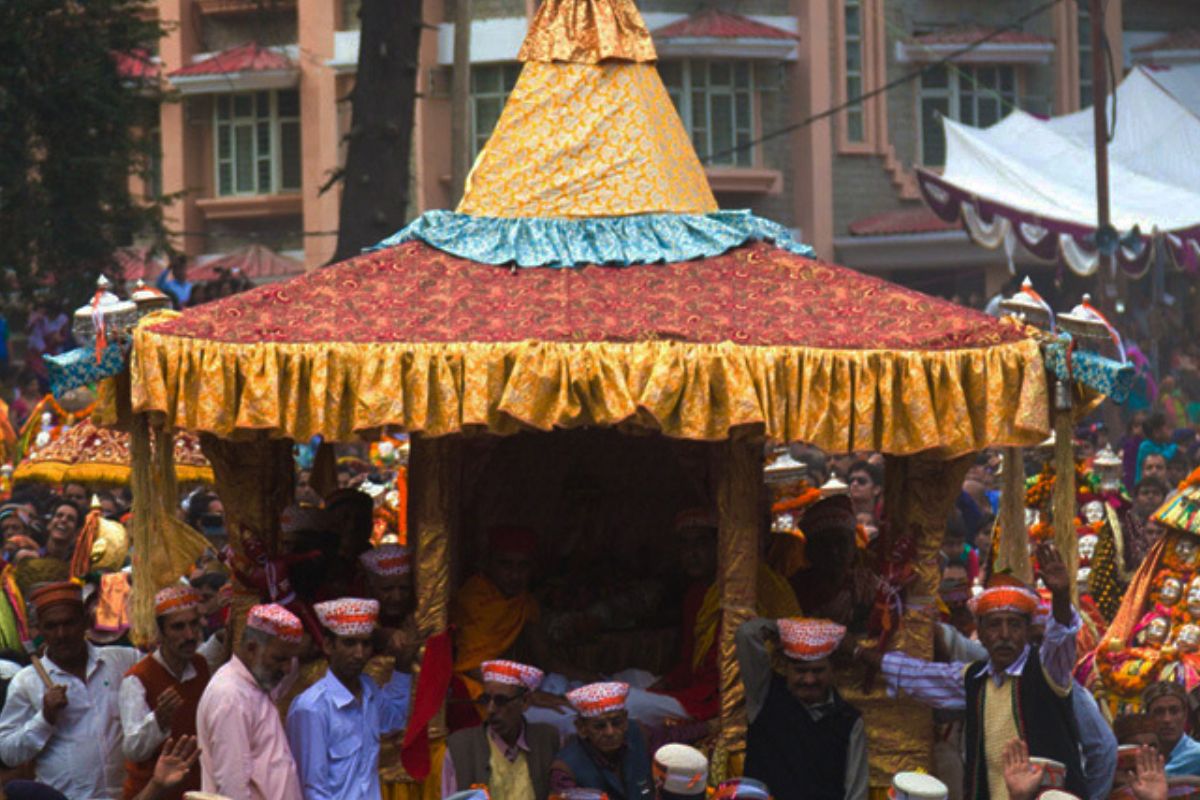In most parts of the country on Vijaya Dashmi, Dussehra is celebrated. Monumentalize the victory of lord Rama over the demon Ravana. Many fairs are organized throughout the country on this day, which celebrates victory over evil.
However, Kullu Dussehra is, distinct in specific ways from the Dussehra celebrations in the other parts of the country. It represents the cultural and ethical values of the people and their spiritual beliefs which are exemplified during this festival with traditional songs, dances, and colourful dresses. It begins on the day of Vijaya Dashmi and lasts for one week.
Advertisement
The history of Dussehra in Kullu dates back to the rule of Raja Jagat Singh who ruled Kullu from 1637 to 1672. According to the legends, Raja Jagat Singh of Kullu installed an idol of Raghunath on his throne as a mark of penance. After this, Lord Raghunath was declared the ruling deity of the valley. He also provided village deities with land rights, requiring them to pay an annual tribute to Raghunath and to participate in the festival.
During the pre-colonial era the villagers and their local deities had to visit the capital, to take part in the rath yatra to attend a Barbara and a royal assembly held by the king during Dussehra. Participation by the village deities was compulsory, and defaulting deities had to pay an annual commendation to Raghunathji (nazrana).
In this festival, the Gods and Goddesses are beautifully embellished on the palanquins, known as Raths, with the league of bands who come from the interior valleys and villages situated in every alcove and corner of the Kullu district.
The Rathyatra of Raghunathjee from Sultanpur to Dhalpur starts in the afternoon. It is mandatory that Devi Hadimba of Dhungri, a village near Manali where her famous temple exists, first arrives at the Raghunathjee temple. She is regarded as the great-grandmother of the area Raja of Kullu is considered as the descendant of their dynasty.
The main attraction of Kullu Dussehra is the Rathyatra of Raghunathjee. The Rath is made of deodar wood with a huge wooden base, wooden wheels and a temple-like structure. The Raghunathjee’s idol is brought from Sultanpur in a palanquin accompanied by the Raja, priests, and bodyguards dressed in their traditional dresses. As soon as the Raghunath deity is seated the devotees of all the Devtas start playing their bands. After Puja sacrifices of a buffalo, goat, cock, fish, and crab are offered.
During the festival, some of the deities meet each other and enquire about their interest through their clairvoyants and the Kardas. The local craftsmen such as potters, basket and mat makers, iron-smiths, shoemakers, and weavers sell their articles in this mela.
Kulu Dussehra is known for its cultural significance and has unique Importance throughout the world. The deity institution in Himachal has a significant role to play in the material aspect of life in the state, however, the socio-ecological aspects of the institution of deities have an immense bearing on conflicts of interest amongst various groups in the area, and thus the government should understand that it is almost dangerous to make an attempt to alter the psychology of the culture.
















